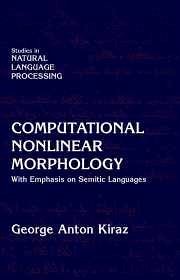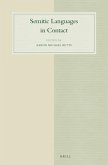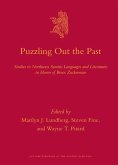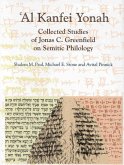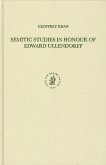By the late 1970s phonologists, and later morphologists, had departed from a linear approach for describing morphophonological operations to a nonlinear one. Computational models, however, remain faithful to the linear model, making it very difficult, if not impossible, to implement the morphology of languages whose morphology is nonconcatenative. Computational Nonlinear Morphology aims at presenting a computational system that counters the development in linguistics. It provides a detailed computational analysis of the complex morphophonological phenomena found in Semitic languages based on linguistically motivated models. The book outlines a new generalized regular rewrite rule system that employs multi-tape finite-state automata to cater for root-and-pattern morphology, infixation, circumfixation and other complex operations such as the broken plural derivation problem found in Arabic and Ethiopic.
Table of contents:
Preface; Abbreviations and acronyms; Transliteration of semitic; Errata and corrigenda; 1. Introduction; 2. Survey of semitic nonlinear morphology; 3. Survey of finite-sate morphology; 4. Survey of semitic computational morphology; 5. A multi-tier nonlinear model; 6. The CV approach; 7. Compiliation into multi-tape automata; 8. Conclusion; Quotation credits.
By the late 1970s phonologists, and later morphologists, had departed from a linear approach for describing morphophonological operations to a nonlinear one. Computational models, however, remain faithful to the linear model, making it very difficult, if not impossible, to implement the morphology of languages whose morphology is nonconcatenative. Computational Nonlinear Morphology aims at presenting a computational system that counters the development in linguistics. It provides a detailed computational analysis of the complex morphophonological phenomena found in Semitic languages based on linguistically motivated models.
Computational Nonlinear Morphology provides a detailed computational analysis of the complex morphophonological phenomena found in Semitic languages.
Table of contents:
Preface; Abbreviations and acronyms; Transliteration of semitic; Errata and corrigenda; 1. Introduction; 2. Survey of semitic nonlinear morphology; 3. Survey of finite-sate morphology; 4. Survey of semitic computational morphology; 5. A multi-tier nonlinear model; 6. The CV approach; 7. Compiliation into multi-tape automata; 8. Conclusion; Quotation credits.
By the late 1970s phonologists, and later morphologists, had departed from a linear approach for describing morphophonological operations to a nonlinear one. Computational models, however, remain faithful to the linear model, making it very difficult, if not impossible, to implement the morphology of languages whose morphology is nonconcatenative. Computational Nonlinear Morphology aims at presenting a computational system that counters the development in linguistics. It provides a detailed computational analysis of the complex morphophonological phenomena found in Semitic languages based on linguistically motivated models.
Computational Nonlinear Morphology provides a detailed computational analysis of the complex morphophonological phenomena found in Semitic languages.

